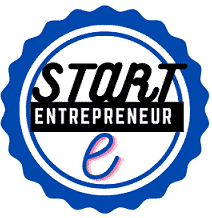These 7 storytelling techniques for business – methods will strengthen your management communication. Getty High high quality, complete storytelling coaching for a team isn’t cheap.
Even a half-day workshop can value over $10,000. And after the company pays for the coaching, your team will nonetheless have to proceed to take time to practice the lessons realized to make the investment worthwhile.
How To Write A Storytelling

Whether you’re within the process of trying to find the proper trainer, debating whether you should spend money on one, or have simply worked with one, you will want to encourage your team to practice.
A management story should be greater than just a “good story.” Yes, a riveting story is a baseline, nevertheless, it also has to fulfill two different standards:
Teach children how to code in a fun, relaxed atmosphere and provide insights to kids, parents, and programmers. Read More
1. Practice Choosing the Right Story on the Right Time
- Your viewers have to know instantly why you’re telling it.
- They have to really feel one thing and do something about it.
Start with these two standards whenever you’re searching for the right leadership story. Consider the change you want to see and find the story that conjures up emotions that may encourage individuals to act.
How to apply this every single day:
Keep observing the tales you hear. Build a story library so you have an archive of great stories to choose from.
Every morning, contemplate your scheduled tasks. Who will you work together with? Is there anything you will need them to do or to agree upon?
Maybe it’s so simple as persuading a colleague to read a guide you’ve beloved. Or maybe you’ll need to strengthen how useful a worker’s everyday tasks are to you.
Think of a narrative it is possible for you to inform no less than one individual at present–a narrative they may discover related and shifting, and that will inspire them to act.
If you get to the tip of the day and notice you haven’t advised any stories that you remember, think about the stories you heard. Do some reverse engineering to figure out how the story was labored and whether it was persuasive. Ask yourself:
* What emotions did it evoke?
* Did you’re feeling like doing anything in response to the story?
(Learn more about identifying good stories.)
2. Practice Hooking Your Audience’s Attention
Here are three simple ways to find a good hook:
* Show distinction by highlighting the difference between previous and current.
* Introduce a conflict by making the audience surprised which of the two sides will win.
* Create a contradiction by displaying how someone flouted the norm.
Practice beginning each presentation, elevator pitch, or casual story is considered one of these three ways.
How to apply this daily:
Think of a story you inform usually. How does it begin? Improve your hook by including contrast, battle, or contradiction. Then apply telling it. Note how your listeners reply.
Or, if you will have to share a project replace or current ends in a gathering or e-mail, consider your hook.
* What’s different at present vs. your last update? What’s different about this set of outcomes vs. comparable research? Turn that right into a “contrast” hook.
* What had been the competing concepts or scenarios? Turn that into a “battle” hook.
* What defied your expectations? Turn that into a “contradiction” hook.
(See examples of distinction, battle, and contradiction here.)
3. Practice Writing Stories Quickly
To write stories quickly, start with the start and end, and write the middle last.
Getty An simple approach to structure a narrative quickly is to suppose “IRS”:
To make the process even sooner, write the beginning and ending earlier than you write the center. When you write the ending, you get very clear about what you want your audience to walk away thinking about.
That makes it much easier to put in writing the center. The middle will be the longest part of the story because it exhibits the character’s journey—how they received from the beginning to the top of their story.
How to apply this daily:
Look forward to the next huge project that may require you to bring your communication “A-game.” This is the place telling stories easily will get nerve-wracking and time-consuming.
Choose three tales that are greatest suited to intersperse into this project. Write one right now, one other tomorrow, and one other the day after. Write the beginning of each story first, then finish, then center.
Or, apply this together with your career story, your LinkedIn profile, or your subsequent social media submission.
4. Practice Using 3 Basic business storytelling
The three main enterprise storylines are tales of Origins, Underdogs, and Overcoming Monsters.
The method a narrative is structured impacts the way in which the audience feels. Choosing the best sort of plot shows that you are tuned in to your viewers’ needs. For instance, origin stories narrate the start of your small business, concept, services, or products, connecting the dots between previous and current in an inspiring method.
How to apply this every single day:
Think of the tales you tell typically. Do they use considered one of these storylines? If they don’t, but considered one of these plots would be a pure fit, why not reshape your stories so the structure is more solid?
Or, practice categorizing the stories you hear. Learn to hear for these three kinds of plots.
(See story templates here.)
5. Practice Finding Metaphors for Complex Information
Every metaphor creates a way of familiarity. Instead of hearing an anxiety-inducing string of unfamiliar jargon, your viewers think, “Okay, so this new thing is like this old thing I already understand. I get it. Tell me extra.”
How to apply this every single day:
What is essentially the most complex info you often have to describe?
Make a list of everything that comes up frequently, but that you struggle to elucidate. Now think of simple, regular basis metaphors that might help your audience achieve a greater understanding.
Common categories for metaphors include sports, food, health, or cash. And a marathon makes an excellent analogy for implementing new technology!
(Read more right here.)
6. Practice Analyzing Your Audience’s Perspective
Too often, we think means an excessive amount of about what we wish to say, not what the audience actually must ..hear.
Getty Whenever we’ve worked exhausting on a project, we feel compelled to share everything we’ve realized. And even if we all know that’s not going to work, it’s excruciating to sort out what’s most essential. (Thank you, the curse of data!)
Usually, this arises from thinking means an excessive amount of what we need to say, not what the audience really needs to listen to!
How to apply this every single day:
Consider the necessary communications arising in your day or week. Practice getting ready for them by asking yourself:
* What else is going on for the folks in my viewers as soon as they leave this assembly?
* What are their most urgent challenges?
* What keeps them up in the evening?
Answering these initial questions shifts you into a special gear. You start considering like somebody who’s making an attempt to soak up the knowledge, process it, and act on it.
(Read extra here.)
7. Practice Testing Your Tone
The tone of voice could make or break your profession. In some instances, the mistaken tone of voice can value you millions. Research of surgeons found that just by listening to audio recordings of the primary and final ten seconds of a routine office visit, examine individuals seen vocal traits that have been associated with extra malpractice claims!
Understanding your own tone of voice is essential for building and bettering workplace relationships.
How to practice this daily:
Choose a subject that you usually have to speak about in a knowledgeable context. Then, find somebody who can provide you feedback—someone who may be very very similar to the folks you usually speak with about this matter. Ask them when your tone of voice is working nicely, and when it isn’t.
Are there instances when your message and tone are incongruent? Maybe you should stress a critical point but your tone sounds lighthearted?
If a check audience isn’t obtainable, document and listen to yourself, contemplating what your target market might consider your tone.
Conclusion
Once you’ve practiced these methods and shared them with your group, you might be prepared for extra complete storytelling training.
The truth is, it’s onerous work shifting your perspective and identifying the stories and messages which are most probably to steer your audience. A story facilitator is provided to do just that. And having the ability to intrigue, delight, and retain your target audience is valuable to each penny.
Learn extra about what to search for in a storytelling trainer.
Resource:
- Want to Drop Out of School and Start a Business? Don’t Make These Stupid Mistakes. (entrepreneur.com)
- Summary: How to Win Friends & Influence People (hubspot.com)
- 21 Success Tips for Young and Aspiring Entrepreneurs (nytimes.com)
- 7 Ways to Refine your Business Idea | by Liz Huber | The Startup | Medium (medium.com)
- 12 Companies That Are Killing It With Brand-Driven Storytelling (sujanpatel.com)
- Start Entrepreneur Online – How To Start Entrepreneur Online (startentrepreneureonline.com)
- How to Start an Online T-Shirt Business in 8 Steps in 2021 (oberlo.com)
- Want to Drop Out of School and Start a Business? Don’t Make These Stupid Mistakes. (entrepreneur.com)
- 21 Success Tips for Young and Aspiring Entrepreneurs (entrepreneur.com)
- 7 Ways to Make Small Talk Way More Interesting | Inc.com (inc.com)
- ð 100+ Inspirational Quotes from Influential Entrepreneurs | Kabbage Resource Center (kabbage.com)
- https://blogs.microsoft.com/blog/2020/01/16/microsoft-will-be-carbon-negative-by-2030/
- https://sustainability.google/environment/








Pretty! This has been a really wonderful post. Many thanks for providing these details.